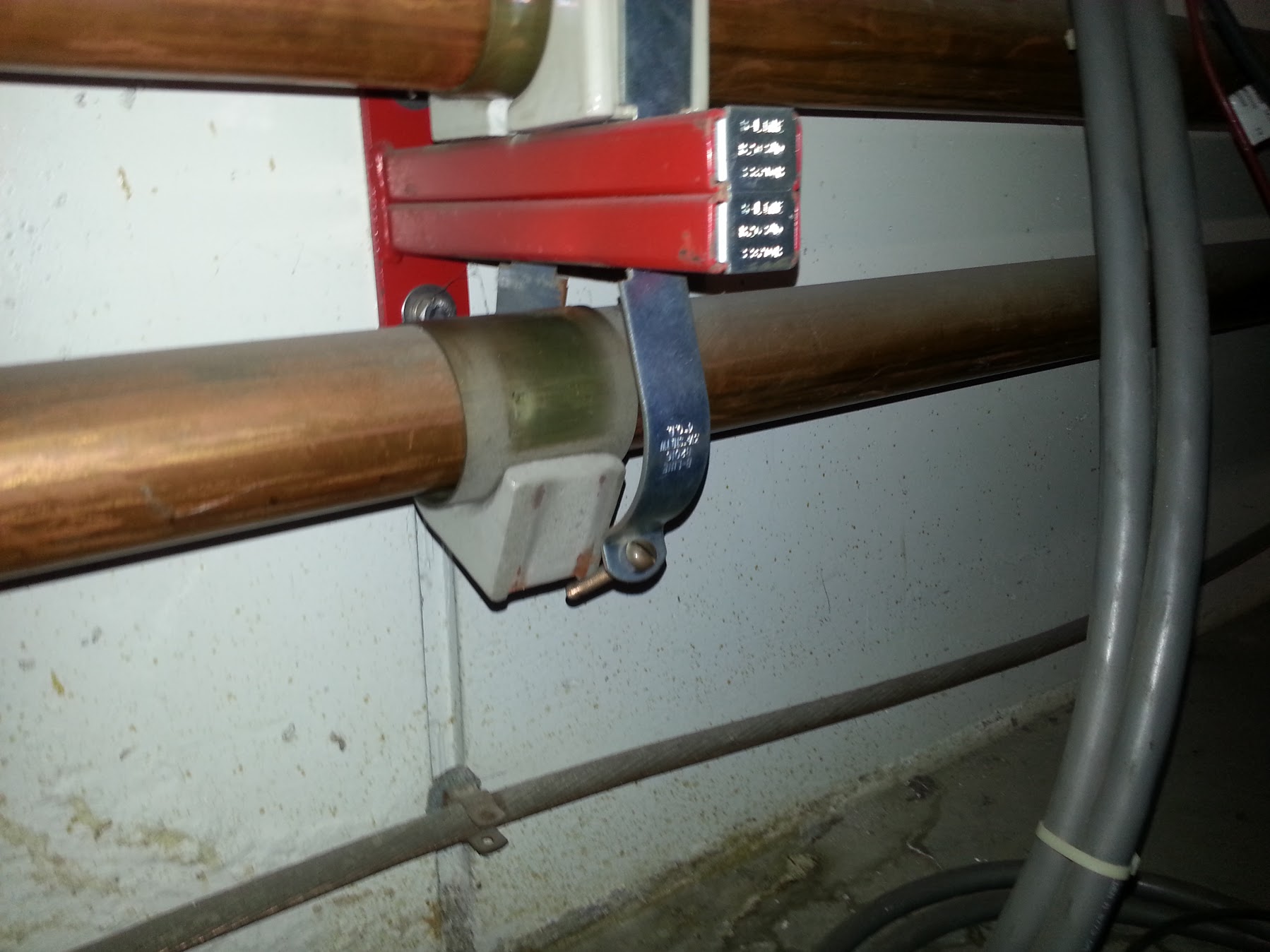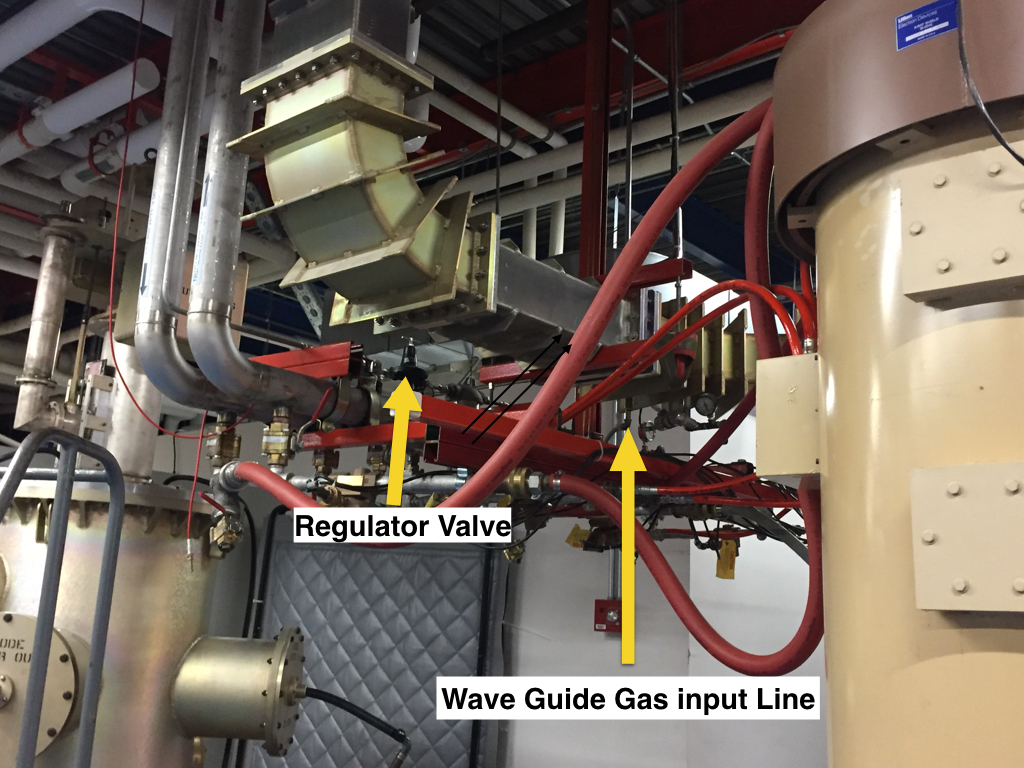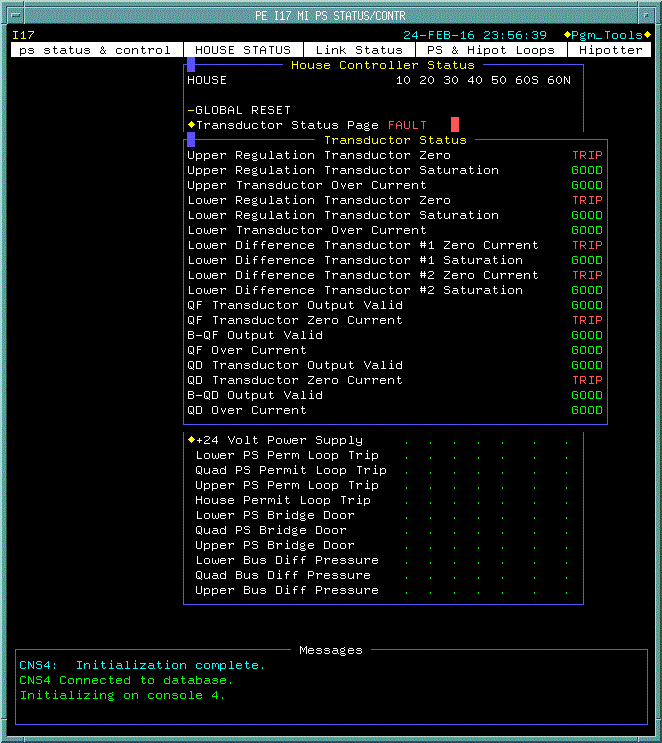
|

|
|

|
| Swollen MI20 Power Supply Capacitor | Main Injector Loose Ceramic Ground Fault | NuMI LCW PLC Fuse Holder | Klystron Waveguide Gas Regulator |
This is an automatically generated plot that can be found via links on the AD home page. These plots allow us to see how the accelerators are performing relative to their design goals.
The black squares correspond to peak power each day this year since October 1st. Recently we reached a peak of 572kW for an hour, a record.
- The MI BLM system generates several readbacks of both MI and RR losses.
- I:LI307 / R:LI307 - Integrated Sum
- A live integral of losses over the entire cycle.
- Integration resets at Prepare for Beam ($79/$B2) and holds at End of Beam ($26/$E6).
- Measured in mRad.
- Extremely useful for tuning.
- Pulls a type 1 abort for its associated machine only when the sum reads above the 'Integrate' limit defined on I40 or R40.
- I:LS307 / R:LS307 - Slow Sum
- A slow latched loss sum that is reset and summed at 25 Hz.
- Measured in mRad/sec.
- Not very useful for tuning.
- Immediately pulls the abort for both machines when it reads above the 'Slow' limit on I40 (The slow limit on R40 does nothing)
- I:LQ307 / R:LQ307 - Fast Sum
- A quickly latched loss sum that is reset and summed at 300 Hz.
- Measured in mRad/sec.
- Useful for tuning lifetime losses.
- Is not an input into the Beam Permit.
See also: Ops Wiki - Beam Loss Monitor and Ops Wiki - Main Injector Loss Monitors
I17 can be a difficult program to interpret correctly. Cindy recently made an entry noting that the readbacks are only to be trusted when we are in an off state. For example, she noticed that Transductor Status Page shows a FAULT indication when we are running.
Steve Hayes assures us that this is normal behavior as I17 is meant for diagnosis after a trip and not a current indicator of problems while ramping.
In November, Adam implemented an addition to the Neutrino-Muon target inhibit system. In the past the target inhibit system would prevent S:V100 from ramping if the SeaQuest target was moving at the beginning of the spill, thus sending the beam intended for SeaQuest to the Switchyard dump. There were incidents of certain critical beamline elements not reaching optimal current, potentially causing rad trips or worse, that prompted a change to prevent V100 from ramping when these key elements were not within tolerance.
Operators need to know that when F:NMPRMT comes into alarm during a spill that one of the inputs, shown in the picture, has prevented V100 from ramping, thus sending beam to the dump. The offending device can be determined by finding corresponding devices in alarm. If F:NMPRMT is the only alarm then the target position has inhibited the beam.
An extra special thank you to Michael Wren
for his above and beyond newsletter input this month!
If you are interested in contributing or have a suggestion for a topic, please email beau@fnal.gov



